|
[This Blog post will focus on some of the basics of Phonological Awareness for young children. Some children may struggle to develop this skill in Kindergarten and Grade 1, and this Blog is meant to you help you understand what a child’s needs might be at these ages. The next Blog, which will be posted soon, will address older students who still may have Phonological Awareness weaknesses that are quietly but significantly impacting reading. At Linguistic Foundations we can help you now with these questions. Please contact us.]
There are many reasons that a young child can struggle to learn to read – some reasons are language-related and some are literacy-based. Very often, weaknesses in Phonological Awareness are a significant cause of literacy difficulties. Teaching phonological awareness in the early grades – especially in Kindergarten – is fundamental. As a parent, it is really important to know how phonological awareness is being taught to your child. Phonological Awareness is a purely language skill. It is a basic language component of the reading process. Phonological Awareness helps a student to hear and work with the sounds of words. It is often called a Lights-Out Activity, because it is about listening to sounds – no letters are involved, and a Kindergarten child needs 20 hours of teaching to be ready to read. Phonological Awareness describes a set of skills, which is built like a ladder, with skills from easiest to most challenging. These are some of the skills (starting with the most basic):
Research shows that each level of Phonological Awareness relates to Reading and Writing skills. For example,
For all of its importance as an essential early literacy skill, Phonological Awareness very often does not receive the instructional focus it needs. A child who struggles to develop phonological awareness will need core instruction with the entire class, as well as small group or individual intervention as needed. She may need more than the 20 hours recommended by the National Reading Panel. Ask your child’s teacher how Phonological Awareness instruction is done in the classroom. You should ask about all of the skills mentioned above, and you should also find out if there is a specific program or curriculum that is used. Also find out how phonological awareness is tested and how testing helps the teacher decide what to teach. In 2000, the National Reading Panel (part of the National Institute of Health) completed a study of all the research that had been done on reading development over the years. They published their studies in several ways – two of the best publications are linked here, one is a parent guide and one is for teachers. Don’t be intimidated by the teacher guide – it is very readable and can give a parent a lot of great information! https://www.nichd.nih.gov/publications/pubs/Documents/PRFbrochure.pdf https://www.nichd.nih.gov/publications/pubs/prf_k-3/Documents/PRFbooklet.pdf Feel free to contact Linguistic Foundations with any questions you might have. Thank you. If you are a parent or teacher, and you are involved with a child who is struggling to develop language, reading, or writing skills, you may have many questions. If your child is very young, you may wonder if she is developing slowly in these areas but will eventually catch up. If you are a parent, you might have gut instincts about your child’s development, but you may be hearing a different story from her teachers at school. You might wonder if your child’s struggles are caused by attention problems or anxiety, and are not really learning issues. The first best way to get a handle on these questions – so you can best help your child – is to learn about her learning strengths and weaknesses. If you are worried specifically about literacy – reading and writing – testing and assessment can answer many questions. There are in-depth test procedures that are available to you and your child, which can identify her strengths and weaknesses in all areas of literacy and language. A child who has several areas of weakness may be identified with Dyslexia or a Language-based Learning Disability. To recognize these kinds of learning profiles in your child is the first step to build a teaching program that can help your child learn in a way that is most effective for her. Your child’s school may offer in-depth testing that can target all necessary areas. If not, testing outside the school may be the next step. How do you know what this testing should consist of, so that you can best understand how your child learns? Two organizations – the International Dyslexia Association (IDA) and the American Speech-Language and Hearing Association (ASHA) – have deep understanding of reading, writing, and language development, as well as disabilities in these areas. Both organizations have created overviews, which explain what is needed in a testing protocol to identify Dyslexia and other language-related disabilities. These two documents are included below. I feel like they are both really well-written, and they give you all the information you need to take the next step forward. Linguistic Foundations can provide your child with testing that falls well within the guidelines of both IDA and ASHA. We also have experience in developing a teaching plan that can address the unique strengths and weaknesses of your child. Please contact Linguistic Foundations with any questions you may have. Thank You.
The five most recent Blogs by Linguistic Foundations focused on the Teaching Standards for Teachers of Reading and Writing, which has been created by the International Dyslexia Association – https://dyslexiaida.org. The International Dyslexia Association is the voice of the Dyslexia community – students, teachers, family, researchers, administrators – and is committed to improving instruction and the quality of education for all students diagnosed with Dyslexia. These Teaching Standards can guide teachers to identify all of the domains of Language and Literacy that are needed for a child with Dyslexia – or any student – to become a proficient reader. These five Blogs have addressed the most important areas of teaching and learning – Phonological Awareness, Phonics/Word Reading, Reading Fluency, Comprehension, and Vocabulary. For each of these Teaching Standards, I organized the information into tables that I hope a parent or teacher can use to learn to recognize the important teaching approaches that need to be happening in the classroom. The tables are provided below. I thought that a parent could use these tables as a guide to be able to discuss the teaching needs of his/her child with the classroom teacher or specialist. I think a parent could also use these pages during classroom observations. Use these resources to learn what effective instruction may look like and to determine the level of expertise that is actually present in a child's classroom. If you have any questions, please contact me at Linguistic Foundations. I will be happy to speak with you. If you have specific concerns about your child, I can give you an overview of our testing process as a way to identify Dyslexia, Language-based Learning Disability, and other language-related issues. Thank You!
Vocabulary knowledge is the area of language that we can easily recognize as an important skill in becoming a successful student. A great deal of our vocabulary is related to our experiences in the world, so we always want to expose a child to as much about the world as we can. As a child gets older, however, vocabulary growth becomes more dependent on reading. The more she reads interesting material, the more her vocabulary will develop. A student who is struggling to read is at risk to have her vocabulary lag behind. More importantly, she is at risk to not reach her own potential as a learner! Learning vocabulary in school depends on several factors. One important and obvious factor is to help a student to improve reading skills so she can access rich vocabulary. Another important factor is the manner that a classroom is organized so that a student has multiple and consistent opportunities to learn new vocabulary. This Blog by Linguistic Foundations continues to present the Teaching Standards for Teachers of Reading and Writing, which has been created by the International Dyslexia Association – https://dyslexiaida.org. These Standards can guide teachers to identify all of the domains of Language and Literacy that are needed for a child to become a proficient reader. It is a very comprehensive set of standards, and this Blog post focuses on the Vocabulary Standard! As always, please send feedback to Linguistic Foundations, and call or email us if you have any questions at all. In addition, contact us if you have any concerns or questions about your child’s development in reading, writing, or language. Our testing is designed to identify language-based learning disabilities, including Dyslexia. Thank you very much. GO PATS!!
The recent Blogs by Linguistic Foundations beginning on November 5th have presented the Teaching Standards for Teachers of Reading and Writing, which has been created by the International Dyslexia Association – https://dyslexiaida.org. These Standards can guide teachers to identify all of the domains of Language and Literacy that are needed for a child to become a proficient reader. It is a very comprehensive set of standards! In these Blogs, I have tried to adapt the information of these standards to be practical for families and teachers (and myself). What should these standards look like in the classroom? In this Blog today, I organized a table, which is adapted from the Text Comprehension Standard. It is attached below. This table describes the different skills and strategies that a student needs to effectively understand text and how these skills might be put into place in a classroom. Being able to understand a text does not depend on a single skill. A student needs to have Language Processing skills and the ability to Read Fluently. A student who is struggling to understand text that she reads may be having difficulties with Language Processing, with Reading Fluency, or in both of these areas of ability. Linguistic Foundations can target each of these areas through our testing. We can determine a student’s specific areas of strength and weakness and identify if a Language-based Learning Disability (including Dyslexia) is present. If you have any questions about text comprehension or any other language-literacy related topic, please contact us at Linguistic Foundations. Thank you very much.
In the most recent Blogs here at Linguistic Foundations, I presented an adaptation to the Standards for Teachers of Reading created by the International Dyslexia Association. In the PDF file below, I adapted the Teaching Standard that addresses Reading Fluency. Reading Fluency is a complicated component of reading; I hope this PDF provides practical and useful information. Reading Fluency is a fundamental skill of reading. Reading Fluency is the flow of reading that reminds us of natural spoken language. For student to be able to understand what she reads to the best of her ability, she needs to read accurately, and with an easy flow. The photo above is a well-researched document created by Jan Hasbrouck and Gerald Tindal (2006) (and used by the Read Naturally organization) that allows teachers to recognize how fluently a student reads. However, to recognize that a student is not a fluent reader does not give an easy road map to help her become more fluent. Reading is a complex mix of Language and Print-Related skills. Many components lead to fluent reading, starting from when a student is very young. Strong Phonological Awareness, Phonics, and Language Experiences are crucial both at home and at school for a young child. As a student gets older, Automatic Word Reading instruction – both through decoding and sight word knowledge – needs to be in place. Language experience needs to continue to be strong, because the flow of reading emerges from the natural rhythm of language. At later ages, fluency depends on the Word Attack of Multi-syllable Words, as well as an understanding of the meaning of more complex Sentence Structures (and how those sentences blend into Paragraphs). For a young student who is identified as at-risk to be Dyslexic, she needs to receive specific differentiated instruction that emphasizes the above areas of need. If a student is identified later as Dyslexic, the specific areas in which a student struggles needs to be identified, so that instruction can double back and target those needs. Please contact Linguistic Foundations if you have any questions or feedback related to these Blogs. If you recognize weaknesses in your child’s reading, writing, or language skills, I will be happy to speak with you about her profile. Our testing can describe your child’s profile of learning; identify Language-based Learning Disability (including Dyslexia); and help you to create an instructional plan to present to your child’s teaching team. Have a great Holiday Season!! Thank you. Hasbrouck, J. & Tindal, G. A. (2006). Oral reading fluency norms: A valuable assessment tool for reading teachers. The Reading Teacher. 59(7), 636-644.
 The most recent Blog by Linguistic Foundations on November 5th introduced the Teaching Standards for Teachers of Reading and Writing, which has been created by the International Dyslexia Association – https://dyslexiaida.org. These Standards can guide teachers to identify all of the domains of Language and Literacy that are needed for a child to become a proficient reader. It is a very comprehensive set of standards! In this Blog today, I have organized a table that I adapted from these Standards. The table focuses on Phonics and Word Reading instruction, and is attached below. This table describes phonics and word reading skills that a student needs to master and how they might be put into place in a classroom. In our most recent Blog on November 5th, I included a similar table related to Phonological Awareness instruction. I hope that these tables can provide some practical knowledge about the skills your child needs to develop and how these skills might be taught in her classroom. I also hope they help you to have a productive conversation with your child’s teacher about the way these skills are taught to your child. Feel free to download them! The next few Blogs will continue to target the other important domains from the Teaching Standards for Teachers of Reading and Writing. For a student who is struggling to develop proficient literacy skills, Linguistic Foundations can identify Dyslexia and other Language-based Learning Disabilities through our testing process. Linguistic Foundations can also help you evaluate how effectively the teaching in your child’s classroom is targeting her needs. Finally, we can help you create a specific Instructional Plan based on her unique profile as a learner. I look forward to get your feedback from these Blogs. Please feel free to add a comment, and I will definitely respond. Also, if you have any questions about your child’s development in Literacy and Language – and how we may be of support – please contact me at Linguistic Foundations. Thank you very much and enjoy the upcoming Holiday time!
The International Dyslexia Association (IDA) is recognized as a leading advocate for individuals (children, adolescents, teens, and adults) diagnosed with Dyslexia, which is considered a Language-based Learning Disability. The IDA website – https://dyslexiaida.org – is very helpful. It offers parents and teachers practical and user-friendly information related to Dyslexia and your child. IDA has created Teaching Standards for Teachers of Reading and Writing, which helps teachers to identify all of the domains of Language and Literacy that are needed to become a proficient reader. It is a very comprehensive set of standards! In my Blog today, I have included a table - in the PDF file below - that I adapted from these Standards. This table is related to Phonological Awareness instruction. Phonological Awareness applies mostly to younger children, but students who are struggling – even older students – almost always have deeper needs in this area. My hope is that you use this table to be able to have a conversation with your child’s teacher about the nature of Phonological Awareness teaching in your child’s classroom. The next few Blogs will target the other important domains. Linguistic Foundations can help you to evaluate how the teaching in your child’s classroom is addressing the needs of your child, especially if she is struggling to develop proficient literacy skills. Linguistic Foundations can also identify Dyslexia and other Language-based Learning Disabilities through our test process, as we clarify your child’s unique profile of strengths and weaknesses. Finally, we can help you create a specific Instructional Plan based on her unique profile as a learner. I look forward to get your feedback on this Blog. Please feel free to add a comment, and I will definitely respond. Also, if you have any questions about your child’s development in Literacy and Language (and how we may be of support), please contact me at Linguistic Foundations. Thank you very much!
Awareness of Dyslexia – and other Language-based Learning Disabilities – is growing, which is a grateful thing. Prevailing attitudes by a lot of our society really has damaged and disserved those with Dyslexia. Those with Dyslexia – even some adults I know – will say, “Oh, I’m just lazy” or “Some people aren’t cut out for school.” I know an enormously talented carpenter who couldn’t read beyond an early reading level; his cognitive strengths and skill set would maybe project him as an engineer or an architect. I don’t know what his reading instruction was like when he was a kid, but he could have perhaps had opportunities available if his instruction had been tailored to his strengths and weaknesses.
When a child is struggling to learn to read or to process and use language, she maybe does not project the intelligence or potential that she may have. When a person has to use compensatory strategies to make up for areas of weakness, she certainly does not look efficient or smooth. In addition, think of the self-consciousness and embarrassment of struggling in front of her peers. Finally, as a learner going into an environment that emphasizes her weaknesses on a daily basis for 5 hours, why should she not give up, act out, or be the class comedian? Obviously, schools should be sensitive to these needs within our children. In many cases, schools will answer the call. If they do not, however, parents have to carry that load. As a parent, you sense the struggle your child might be experiencing, and you recognize that there is a window of time, of which you need to take advantage, so that your child can reach her potential. The organization Made By Dyslexia has created inspiring videos and stories which describes the strengths of folks with Dyslexia who have untapped talents: https://madebydyslexia.blog/2017/08/16/dyslexic-thinking-skills-explained/ At Linguistic Foundations, we think that identifying a child’s strengths and weaknesses is the most important first step. Sometimes her profile of strengths and weaknesses leads to a diagnosis of Dyslexia, Specific Learning Disability, or Language-based Learning Disability, at which time you can begin to have the conversation with her school team about her learning needs and the instruction she needs to receive. We can identify your child's learning profile through our testing process. We will also help you work with your child’s school to create a teaching program that will target her strengths and weaknesses and help her to reach her potential as a learner. Please contact us at Linguistic Foundations with any questions you have. Thank you! Growth Mindset is a simple term that has a very important message for those of us who teach and care for children. Kids who may learn differently or have been identified with a disability such as Dyslexia or other SLD desperately need us to understand Growth Mindset. Carol Dweck is a professor at Stanford University who developed this idea. She has found that people, in general, tend to either have a Growth Mindset or a Fixed Ability Mindset. They give an idea about a person’s approach to learning: Fixed Ability Mindset – the belief that each person has a fixed amount of intelligence; that you reach a certain level and that’s where you stay. Growth Mindset – a person’s intelligence can be developed through effort, effective learning, good teaching, and mentorship. How does a person have either a Growth Mindset or a Fixed Ability Mindset? Is she born with that tendency? Does her environment lead her to think that way? Maybe some of both? The Fixed Ability Mindset implies that there is one way to learn, and if a child is not successful in that way, then it is because she only has that amount of ability. If that is true, then a child with a ‘learning disability’ will only reach a certain level and then be done… The Growth Mindset leads us to realize that we can instill the sense that each learner is different, that each learner can grow along her own path, and that a combination of good effort and good teaching can make learning happen. Of course, Growth Mindset needs to be the basic thought process behind teaching a child with Dyslexia, Specific Learning Disability (SLD), and Language-Based Learning Disability! At Linguistic Foundations, we know that a Growth Mindset will lead us to find the strengths and weaknesses a child has. A Growth Mindset also leads us to put into practice teaching practices that will target those strengths and weaknesses to help her learn and grow. Finally, a Growth Mindset will instill in that child the belief that she can learn and grow! Please watch the video below. It is inspiring! If you a concerned about your child’s reading, writing, or language development, Linguistic Foundations can help. We can discover your child’s learning profile (and identify a disability if necessary). We can also build a set of teaching recommendations that will specifically address your child’s strengths and weaknesses because there is a unique combination of teaching approaches that can help your child to learn and grow. Please fell free to contact us with questions or feedback. Thank you very much. |
The Latestfrom Archives
May 2018
Categories
|
||||||||||||||||||||||||||||||||||||||||||||||||||||||||||||||||||||||||||
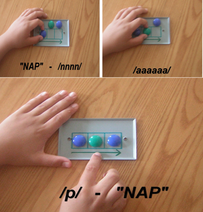
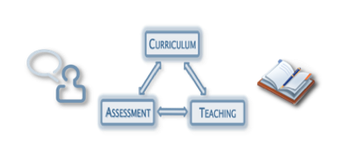
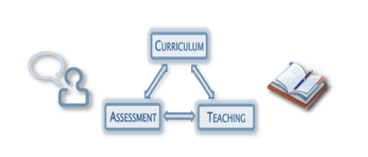

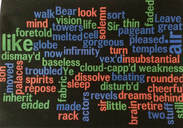
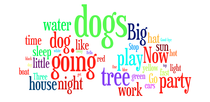
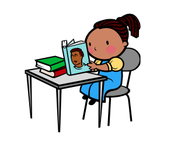
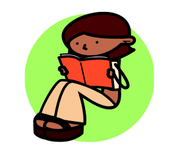
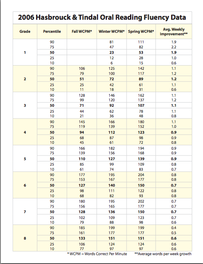
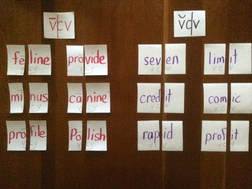
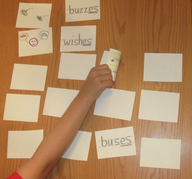



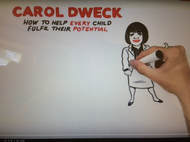
 RSS Feed
RSS Feed
